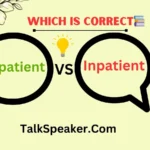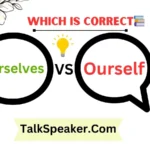Last updated on October 21st, 2024 at 03:46 pm
Punctuation is a critical aspect of writing that can dramatically affect the clarity and readability of your text.
When it comes to abbreviations like “e.g.” and “i.e.,” proper punctuation is essential.
This article will help you master the use of commas after “e.g.” and “i.e.,” ensuring your writing is both precise and professional.
Understanding “e.g.” and “i.e.”
What Does “e.g.” Mean?
The abbreviation “e.g.” stands for exempli gratia, a Latin phrase that means “for example.”
It’s used to introduce examples that illustrate a point. For instance:
- Correct Use: You should bring items for a picnic, e.g., sandwiches, fruits, and drinks.
In this example, “e.g.” introduces a list of items you might bring to a picnic. It’s important to note that the list is not exhaustive; it’s simply providing examples.
What Does “i.e.” Mean?
The abbreviation “i.e.” stands for id est, another Latin phrase, which means “that is” or “in other words.”
It is used to clarify or rephrase a statement. For example:
- Correct Use: She has a habit of being punctual, i.e., she always arrives ten minutes early.
Here, “i.e.” rephrases and clarifies what it means to be punctual in this context.
Punctuation Basics: The Comma
The Importance of Commas
Commas play a vital role in separating elements within a sentence, ensuring clarity and readability.
They can indicate pauses, separate items in a list, and prevent misreading. Proper comma usage helps to:
- Enhance readability: By breaking up complex sentences into more manageable parts.
- Avoid ambiguity: By clearly delineating different parts of a sentence.
When to Use a Comma After “e.g.” and “i.e.”
In most cases, a comma should follow “e.g.” and “i.e.” This is a standard rule that enhances clarity by creating a natural pause after these abbreviations. Consider these examples:
- Correct: Many fruits are rich in vitamins, e.g., oranges, strawberries, and kiwis.
- Correct: He is known for his unusual hobby, i.e., collecting vintage typewriters.
Exceptions and Variations
While the general rule is to place a comma after “e.g.” and “i.e.,” there are some exceptions based on style guides and personal preferences. For instance:
- Informal Writing: In less formal contexts, some writers may omit the comma for a more streamlined look.
- Specific Style Guides: Different style guides may have slightly varying rules. Always check the relevant style guide if you’re writing for a particular publication.
Clarifying Meaning: The Role of a Comma
Enhancing Readability
Commas significantly enhance the readability of your text. When used after “e.g.” and “i.e.,” they help to:
- Separate Examples from the Main Sentence: This separation allows the reader to easily distinguish the main idea from the illustrative examples or clarifications.
- Prevent Misunderstandings: Without a comma, sentences can become confusing and harder to follow. For example:
- Without Comma: She enjoys many outdoor activities e.g. hiking, swimming, and cycling.
- With Comma: She enjoys many outdoor activities, e.g., hiking, swimming, and cycling.
Avoiding Misunderstandings
Proper comma usage helps to avoid misunderstandings that can arise from poorly punctuated sentences. Here are a few examples:
- Ambiguous: The project includes several steps i.e. planning, execution, and review.
- Clear: The project includes several steps, i.e., planning, execution, and review.
In the clear version, the comma after “i.e.” helps to clearly separate the clarifying list from the rest of the sentence.
Expert Opinions: Style Guides on Comma Usage
Chicago Manual of Style
The Chicago Manual of Style (CMOS) recommends using a comma after “e.g.” and “i.e.” to enhance clarity. According to CMOS:
- Rule: Always place a comma after these abbreviations.
- Example: Many popular fruits, e.g., apples, bananas, and cherries, are rich in vitamins.
Associated Press (AP) Stylebook
The AP Stylebook also advises using a comma after “e.g.” and “i.e.” This aligns with their general guidelines on clarity and readability:
- Rule: Use a comma to separate the abbreviation from the rest of the sentence.
- Example: You can visit several nearby cities, i.e., Dallas, Austin, and San Antonio.
Other Style Guides
Different style guides may offer various nuances on this rule. Here’s a brief comparison:
| Style Guide | Rule on Comma Usage After “e.g.” and “i.e.” |
| MLA | Recommends using a comma for clarity |
| APA | Advises a comma to ensure readability |
| Oxford Style Manual | Suggests a comma but allows for stylistic flexibility |
Practical Examples: “e.g.” and “i.e.” in Sentences
Examples with “e.g.”
Using “e.g.” correctly in sentences can significantly enhance clarity. Here are some practical examples:
- Correct: She enjoys various cuisines, e.g., Italian, Mexican, and Thai.
- Correct: He reads many types of books, e.g., fiction, non-fiction, and biographies.
Examples with “i.e.”
“I.e.” is used to clarify or rephrase a statement. Here are examples of its correct usage:
- Correct: The event is semi-formal, i.e., no jeans or sneakers.
- Correct: She is studying STEM fields, i.e., science, technology, engineering, and mathematics.
Interactive Exercise
Try punctuating these sentences correctly:
- The meeting will cover several topics i.e. project updates, budget planning, and team feedback.
- Many mammals are nocturnal e.g. bats, owls, and raccoons.
Answers:
- The meeting will cover several topics, i.e., project updates, budget planning, and team feedback.
- Many mammals are nocturnal, e.g., bats, owls, and raccoons.
Common Misconceptions and Errors
Misuse of “e.g.” and “i.e.”
Many people misuse “e.g.” and “i.e.” by interchanging them or using them incorrectly. Here are some common mistakes:
- Incorrect: She loves tropical fruits, i.e., mangoes, pineapples, and papayas.
- Explanation: This should be “e.g.” because it’s providing examples, not a clarification.
- Incorrect: We need to complete the mandatory training, e.g., cybersecurity, ethics.
- Explanation: This should be “i.e.” if it’s specifying the exact training required.
Punctuation Errors
Avoid these common punctuation errors:
- Missing Comma: He is a polyglot i.e. he speaks several languages fluently.
- Correction: He is a polyglot, i.e., he speaks several languages fluently.
- Extra Space: She likes outdoor activities, *e. g. *, hiking, and camping.
- Correction: She likes outdoor activities, e.g., hiking, and camping.
Having trouble with English? We make it simple with easy tips and guides to help you improve.
Start learning and boost your skills Talk Speaker.
Distinguishing “i.e.” from “e.g.”
Not Interchangeable
A critical aspect of mastering these abbreviations is understanding that they are not interchangeable. Here’s how to distinguish them:
- “e.g.” (for example): Use when you want to provide examples.
- Example: He has visited several European countries, e.g., France, Germany, and Italy.
- “i.e.” (that is): Use when you want to clarify or restate something.
- Example: The show was a hit, i.e., it received great reviews and high ratings.
Contextual Examples
Here are some contextual examples to help differentiate between “e.g.” and “i.e.”:
- e.g. Example: She enjoys various hobbies, e.g., painting, reading, and hiking.
- i.e. Example: The car needs some repairs, i.e., the brakes and the transmission need fixing.
Additional Tips for Mastering “e.g.” and “i.e.”
Consistency in Usage
Consistency is key when using “e.g.” and “i.e.” in your writing. Here are some tips:
- Stick to One Style Guide: Choose a style guide and follow its rules consistently.
- Proofread Carefully: Ensure that your use of these abbreviations is correct throughout your document.
Proofreading Techniques
Effective proofreading can help you catch mistakes and improve your writing. Here are some techniques:
- Read Aloud: Reading your text aloud can help you spot errors and awkward phrasing.
- Use Tools: Utilize grammar and style-checking tools to assist in proofreading.
Further Resources
For more in-depth understanding and practice, consider these resources:
- The Chicago Manual of Style
- AP Stylebook
- Grammarly
Conclusion
Mastering the use of “e.g.” and “i.e.” along with the correct punctuation can significantly improve the clarity and professionalism of your writing. Remember to:
- Use commas to separate these abbreviations from the rest of the sentence.
- Understand and distinguish their meanings to avoid common mistakes.
- Follow consistent guidelines from reputable style guides.
By practicing these rules and tips, you’ll enhance your writing skills and communicate your ideas more effectively. Happy writing!

As an experienced English teacher, I’m Jessica Thompson, here to make grammar and vocabulary simple and fun. Join me on TalkSpeaker as we explore the language together, one lesson at a time!



